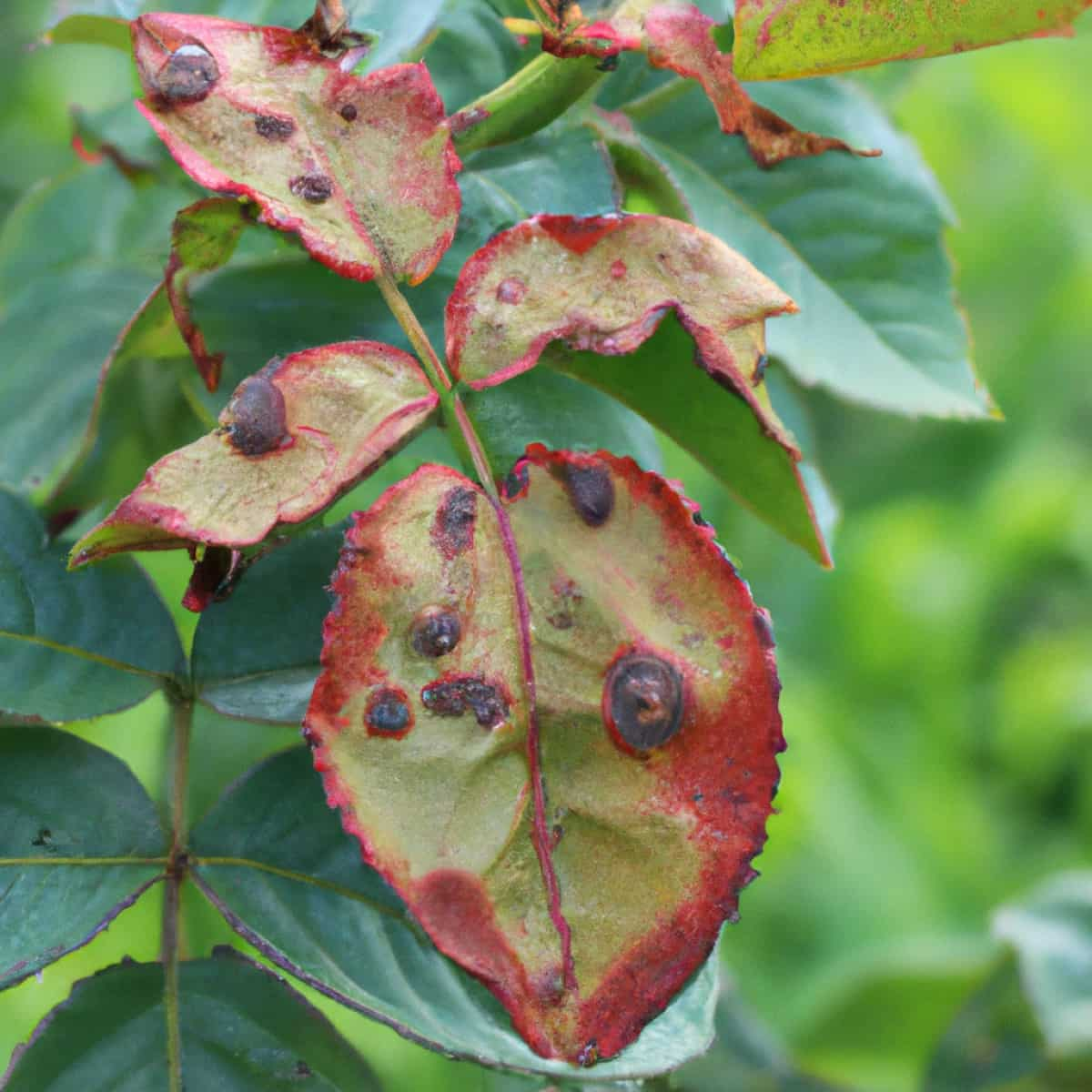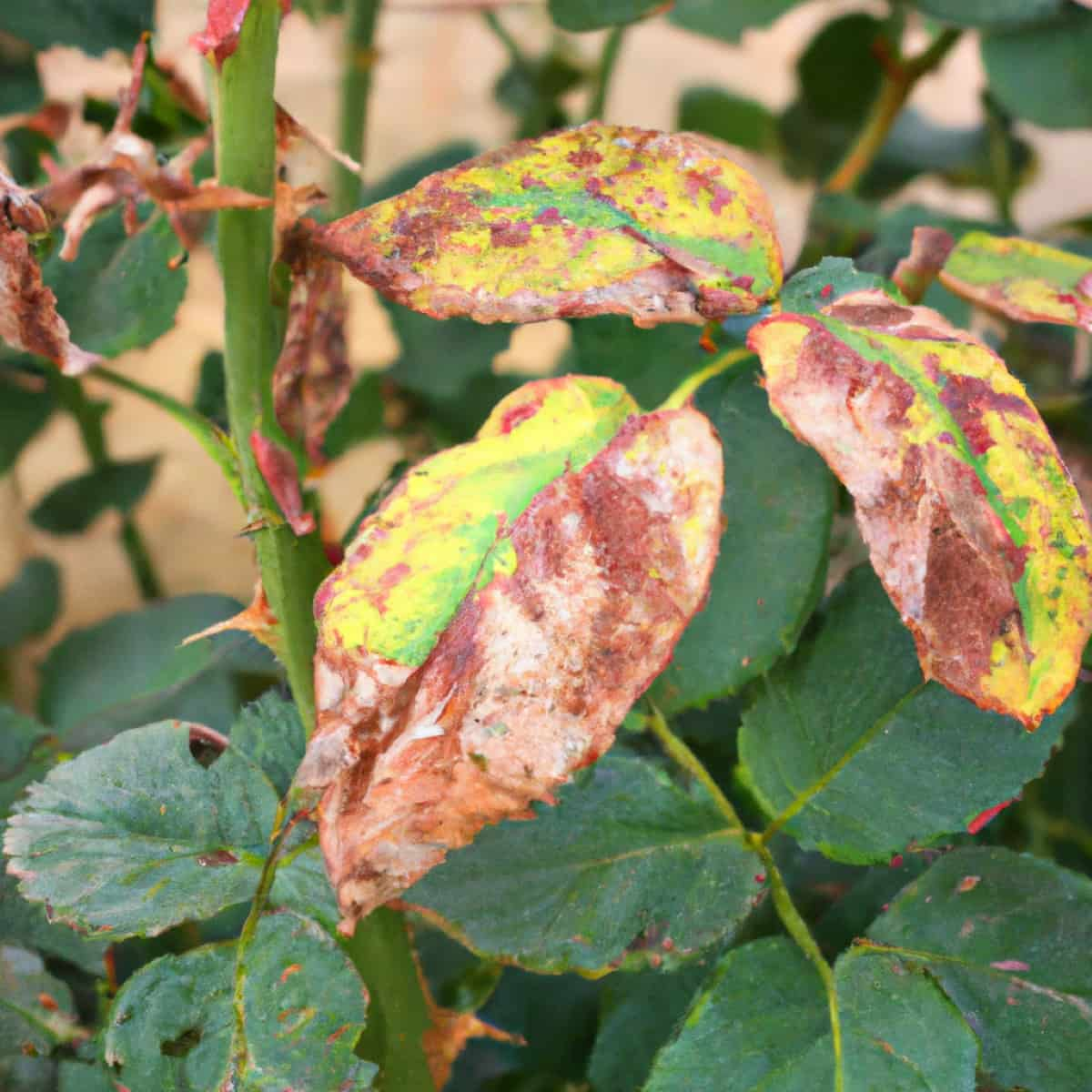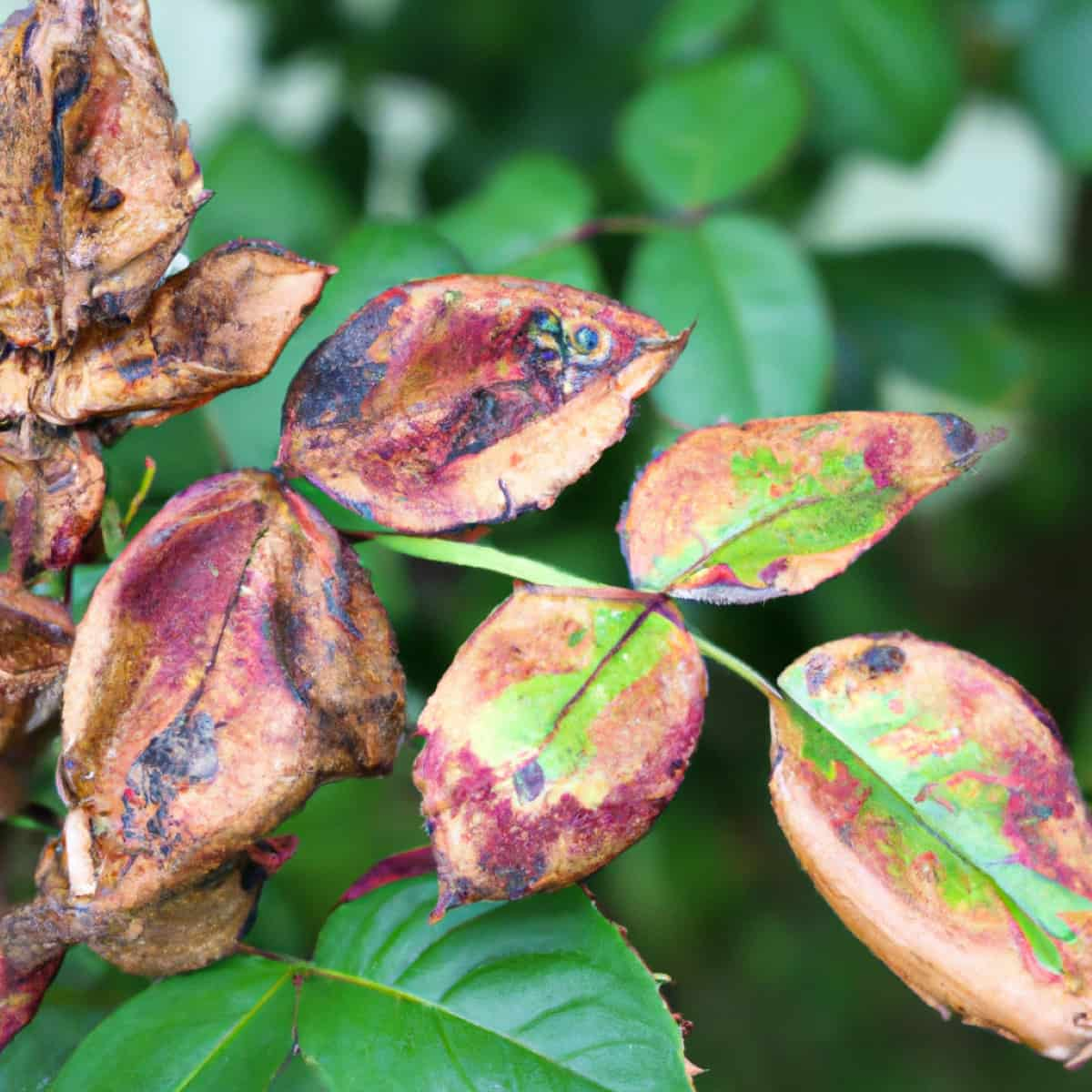The Rose Rust Disease, caused by the fungal pathogen Phragmidum mucronatum, is one of the most common and destructive diseases affecting rose crops worldwide. The economic impact of Rose Rust Disease is significant, as it attacks the foliage and forms rusty-orange lesions, reduces flower yield, quality, and marketability, and can result in a substantial loss of yield. Effective disease management requires a combination of cultural, biological, and chemical control measures.

The disease’s prevention and control are critical for rose production’s sustainability and profitability. To effectively manage this disease, it is important to understand its disease cycle, the mode of disease spread, and the best methods for controlling it. This article will provide an overview and discussion of the Rose Rust Disease in Rose crops, including its symptoms, identification techniques, and control.
Rose Rust Disease Management
The Causal Organism of Rose Rust Disease
- Phragmidum mucronatum is an obligate biotrophic fungus that belongs to the Family Phragmidiaceae of Order Pucciniales of the Phylum Basidiomycota.
- Teliospores are thick-walled resting spores that are more resistant and are important for the pathogen’s survival and overwintering.
- Basidiospores are short-lived spores that can infect alternate hosts, such as brambles.
The Disease Cycle of Rose Rust Disease
- The lifecycle of Phragmidum mucronatum involves several stages, including urediniospores, teliospores, and basidiospores. The disease starts with the germination of basidiospores, produced in pustules on the infected rose plants. Basidiospores land on the rose plant’s surface and penetrate through the cuticle and epidermis.
- Over time, small, reddish-brown pustules develop on the lower surface of the rose leaves. These pustules contain masses of spores called urediniospores. The pustules rupture, releasing numerous urediniospores. In favorable environmental conditions, the cycle continues, with repeated cycles of spore release, dispersal, and infection throughout the growing season.
Occurrence of Rose Rust Disease in Rose Crop
- Location of Rose Rust Disease: This disease occurs in Rose crops in India, Africa, China, Bangladesh, Sri Lanka, Vietnam, Thailand, Indonesia, Malaysia, the Philippines, the United States, Mexico, Brazil, Colombia, Ecuador, Peru, and Australia.
- Host Range: The most common crops affected by Phragmidum mucronatum are Rose, Blackberry, Raspberry, Bramble, Quince, Hawthorn, and Firethorn.
Favorable Conditions for Rose Rust Disease Spread in the Field
- Temperature – The optimal temperature range for disease development is between 15-25°C.
- High Humidity – Urediniospores germination and fungal growth are favored by high humidity.
- Leaf Wetness – Wet leaves for extended periods provide a good medium for spore germination and infection.
- Alternative Hosts – The presence of alternate hosts like Brambles will act as a source of inoculum for the next season.
- Foliage Density – Dense foliage or crowded plantings that lack proper air circulation and sunlight penetration in dense canopies can create a microclimate conducive to the pathogen.
- Plant Stress – Plants under stress due to pruning cuts, wounds, injuries, and mechanical damage are more susceptible.
Damage Symptoms of Rose Rust Disease
- The rust disease is characterized by the development of distinctive rusty-orange lesions on infected plants’ leaves, stems, and petals.
- The pathogen primarily infects the leaves of rose plants, causing the characteristic symptoms.
- This disease can lead to defoliation, reduced flower production, and even plant death.
- The affected leaves show chlorosis, wilt, and fall prematurely.
- Other symptoms include stunted growth and dieback symptoms due to the weakening of plants.
In case you missed it: Rose Dieback Disease Management: Symptoms, Treatment, Chemical, Biological, and Organic Control

Percentage of Yield Loss Due to Rose Rust Disease in Rose Crop
- The disease can cause 20% yield losses in the United States. In Mexico, yield losses are 30%. In India, the yield losses are 50%. In Bangladesh, the losses are 60%. In Sri Lanka, the losses are 25%. In China, a 40% yield loss is seen. In Africa, yield losses are up to 60%.
- In Indonesia, it is 20%. In Vietnam, it is 5-10%. In Ecuador, it is 15-20%. In Peru, it is 20%. In the Philippines, it is 35%. In Malaysia, it is 40%. In Colombia, it is 50%. In Thailand, it is 10%. In Brazil, it is 30%. In Australia, the losses are 20%. The Economic Threshold Level is determined at around 20% of affected leaves.
Rose Rust Disease Management by Cultural Control
- Spacing – Proper plant spacing allows for better air circulation and sunlight penetration into the canopy, which can help to maintain a drier environment.
- Sanitation – Remove and destroy any infected plant material, including fallen leaves, pruned parts, and debris.
- Pruning – Pruning out crowded branches and removing excessive foliage helps reduce humidity and facilitates the drying of leaves.
- Weed Management – Control weeds and remove alternate hosts near rose crops.
- Irrigation Management – Watering in the early morning allows the foliage to dry before evening, reducing the risk of infection.
Rose Rust Disease Management by Biological Control
- Predators – Predatory mites, insects, or nematodes may prey on the spores or mycelium of the pathogen suppressing its population.
- Fungal Antagonists – Trichoderma harzianum and Trichoderma viride inhibit fungal growth and induce plant defense mechanisms.
- Bacterial Agents – Bacillus subtilis, Pseudomonas fluorescens, and Streptomyces spp. suppress the growth of the pathogen.
Rose Rust Disease Management by Chemical Control
- Spray Carboxin, Captan, Carbendazim, Mancozeb, Chlorothalonil, Azoxystrobin, Propiconazole, or Tebuconazole to control the fungus spread.
- Sulfur Application – Spray Wettable Sulfur or dust sulfur powder on the pruned parts of the plant.
Rose Rust Disease Management by Organic Control
- Plant extracts from neem, ginger, garlic, and turmeric leaves, such as powders, oils, and cakes, are used as a preventive measure to control the disease.
- Essential oils like tea tree, thyme, oregano, clove, and cinnamon can also control the disease.
- Compost teas are liquid extracts made from compost or vermicompost and are rich in beneficial microorganisms.
- Spray Sulphur-based fungicides, such as elemental sulfur and sulfur dioxide, to control the disease.
- Spray Copper-based fungicides like copper sulfate or copper hydroxide to protect the plant surfaces and prevent infection.
Rose Rust Disease Management by Preventive Control Measures
- Apply organic mulch around the base of rose plants to suppress weed growth and maintain soil moisture.
- Avoid planting roses in low-lying or crowded spaces with restricted air circulation.
- Use drip irrigation to water the plants at the soil level, minimizing leaf wetness.
- Use disease-free, healthy, and certified planting material only.
- Regularly monitoring the crops for signs of disease will help to find and manage the disease early before it spreads.
- Always use sterilized and disinfected pruning equipment to prevent the spread of the disease to new trees.
In case you missed it: Rose Termite Pest Management: Symptoms, Treatment, Chemical, Biological, and Organic Control

Conclusion
The Rose Rust Disease caused by Phragmidum mucronatum is a significant threat to Rose production worldwide. It can lead to substantial yield losses and impact the economic state of rose farmers. Integrated disease management focuses on disease control and promotes overall plant health and vitality. By adopting a comprehensive approach, growers can reduce reliance on any single control method and minimize the environmental impact of excessive pesticide use.
- Beneficial Insects in Pest Management
- Natural Solutions for Pest Control in Flower Gardens
- Types of Fungicides Used in Agriculture
- Common Issues in the Fruit Development Stage of Pomegranate Farming
- Fruit Development Issues in Papaya: Easy Solutions and Treatment
- Soil-Borne Diseases and How to Protect Your Plants
- Practices to Prevent Disease Spread in the Garden
- From Wilted to Thriving: How to Treat Root Rot Naturally in Houseplants
- Natural Remedies to Cure Brown Spots on Fig Tree Leaves